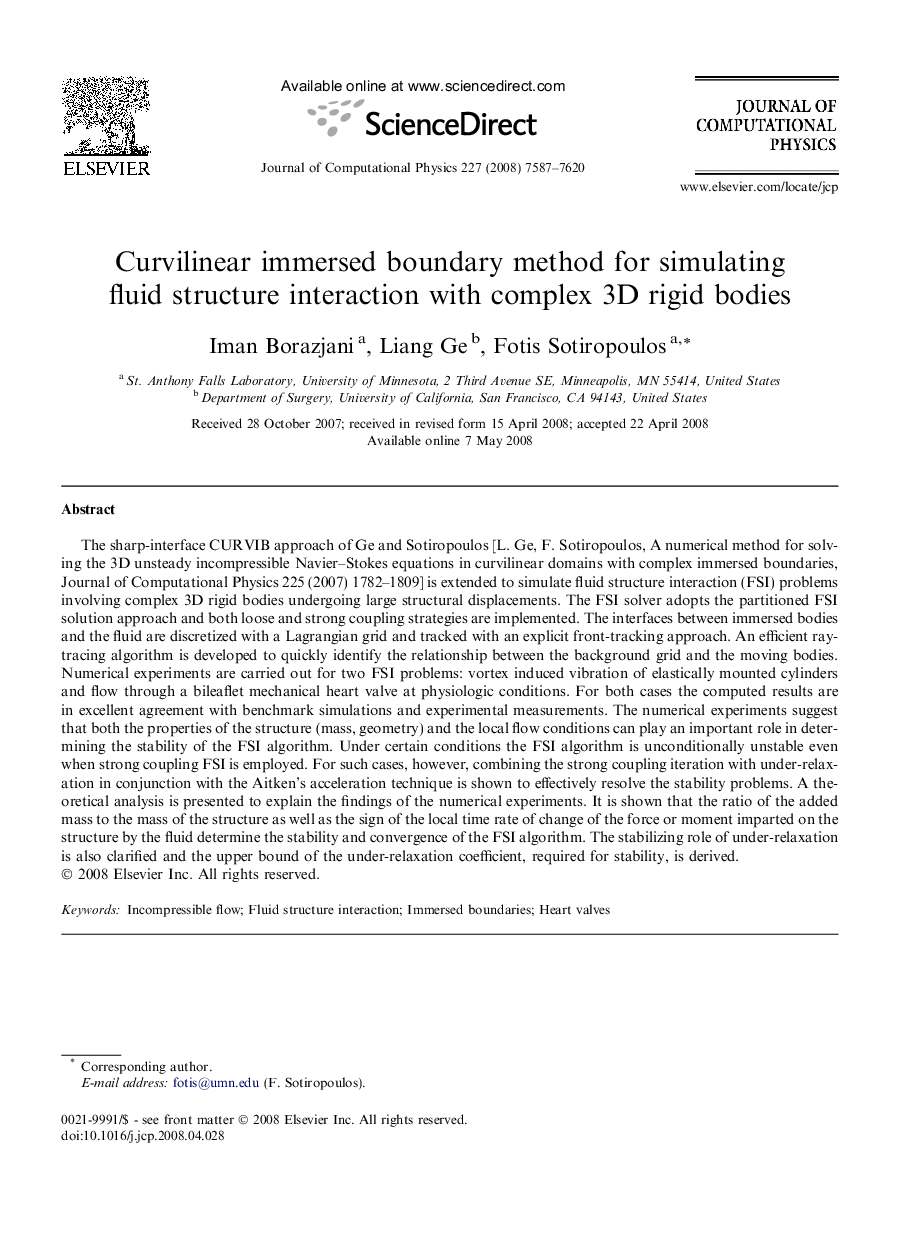| کد مقاله | کد نشریه | سال انتشار | مقاله انگلیسی | نسخه تمام متن |
|---|---|---|---|---|
| 521948 | 867799 | 2008 | 34 صفحه PDF | دانلود رایگان |

The sharp-interface CURVIB approach of Ge and Sotiropoulos [L. Ge, F. Sotiropoulos, A numerical method for solving the 3D unsteady incompressible Navier–Stokes equations in curvilinear domains with complex immersed boundaries, Journal of Computational Physics 225 (2007) 1782–1809] is extended to simulate fluid structure interaction (FSI) problems involving complex 3D rigid bodies undergoing large structural displacements. The FSI solver adopts the partitioned FSI solution approach and both loose and strong coupling strategies are implemented. The interfaces between immersed bodies and the fluid are discretized with a Lagrangian grid and tracked with an explicit front-tracking approach. An efficient ray-tracing algorithm is developed to quickly identify the relationship between the background grid and the moving bodies. Numerical experiments are carried out for two FSI problems: vortex induced vibration of elastically mounted cylinders and flow through a bileaflet mechanical heart valve at physiologic conditions. For both cases the computed results are in excellent agreement with benchmark simulations and experimental measurements. The numerical experiments suggest that both the properties of the structure (mass, geometry) and the local flow conditions can play an important role in determining the stability of the FSI algorithm. Under certain conditions the FSI algorithm is unconditionally unstable even when strong coupling FSI is employed. For such cases, however, combining the strong coupling iteration with under-relaxation in conjunction with the Aitken’s acceleration technique is shown to effectively resolve the stability problems. A theoretical analysis is presented to explain the findings of the numerical experiments. It is shown that the ratio of the added mass to the mass of the structure as well as the sign of the local time rate of change of the force or moment imparted on the structure by the fluid determine the stability and convergence of the FSI algorithm. The stabilizing role of under-relaxation is also clarified and the upper bound of the under-relaxation coefficient, required for stability, is derived.
Journal: Journal of Computational Physics - Volume 227, Issue 16, 10 August 2008, Pages 7587–7620